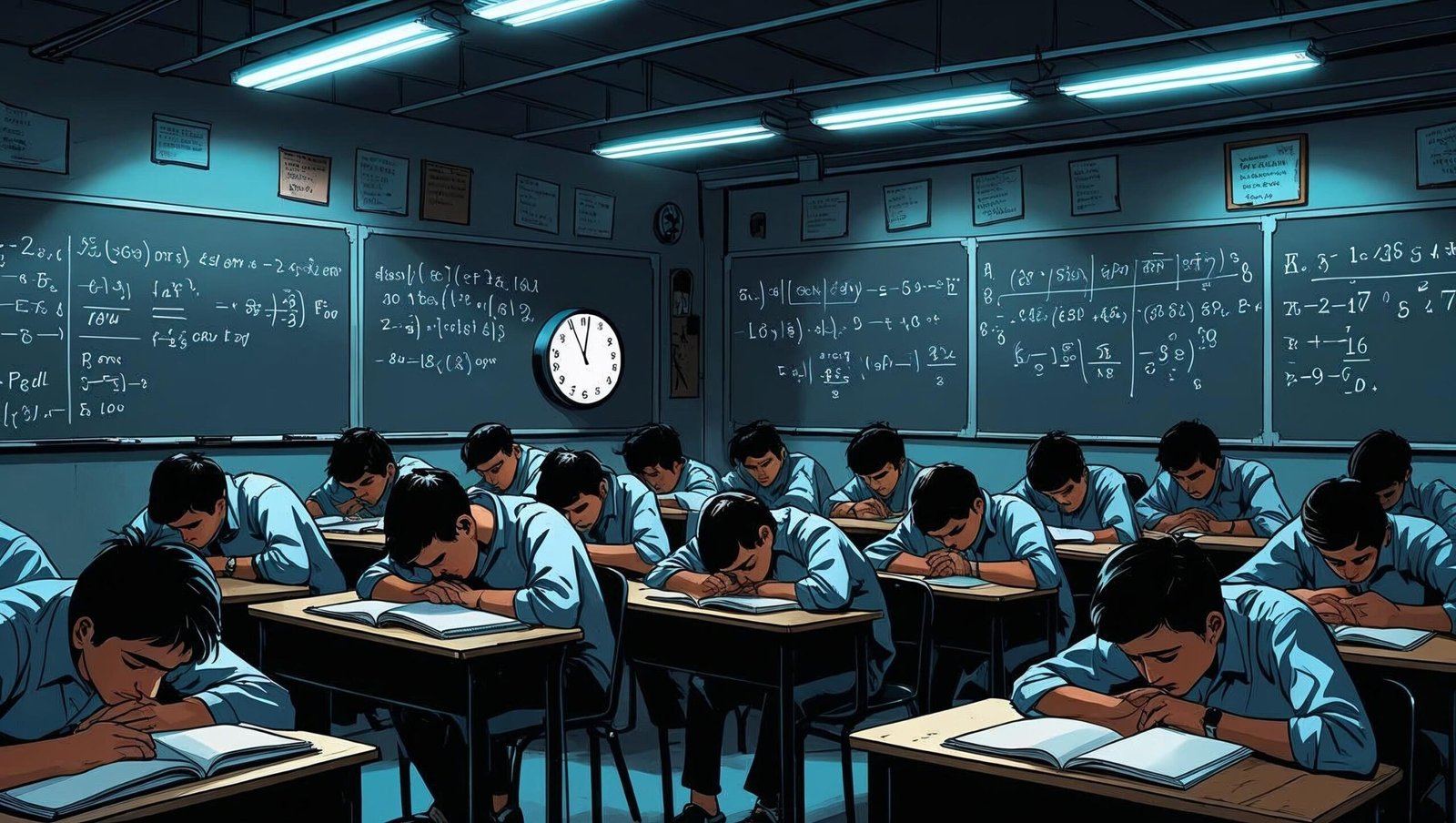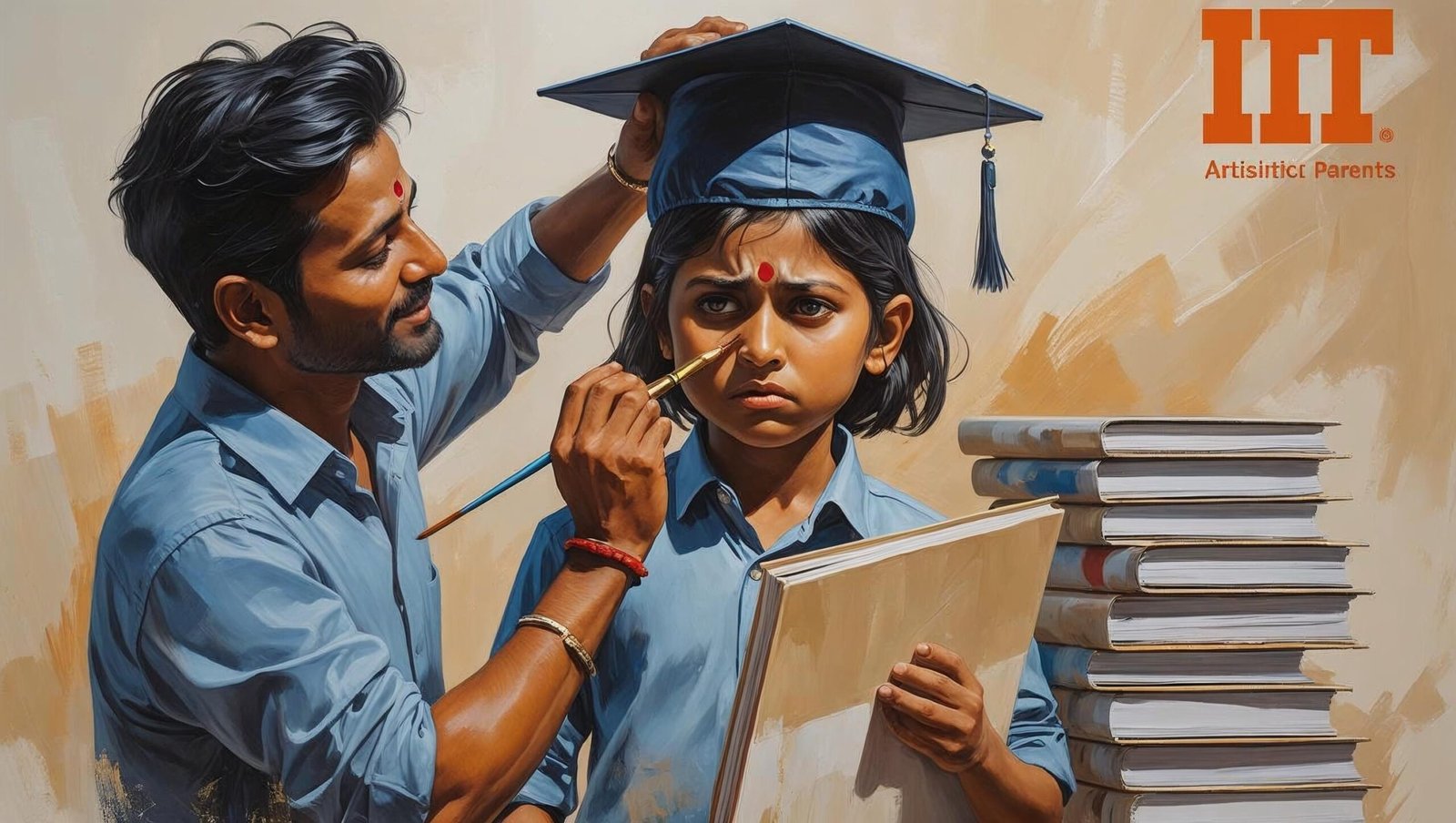Introduction: The Great Indian Obsession
The Great Indian Obsession is not just a book—it’s a cultural exposé, a sociological diagnosis, and a wake-up call for millions. Written by Adhitya Iyer, an engineer-turned-writer, this book is a courageous attempt to question, dissect, and deconstruct India’s overwhelming infatuation with engineering. Whether it’s the expectations of parents, the dreams of middle-class households, or the systemic failure of imagination, this obsession runs deep and dark.
In this extensive review, we’ll explore the Great Indian Obsession through its core arguments, narrative style, anecdotal evidence, and philosophical musings. We will also examine how this phenomenon affects identity, ambition, innovation, and national development. Buckle up as we unravel seven shocking truths that this book courageously confronts.

1. The Origins of the Great Indian Obsession
To understand the Great Indian Obsession, one must first understand its roots. Iyer traces this obsession back to colonial India, where British policies systematically categorized Indians into clerical roles. Over time, the Indian middle class began to equate engineering with stability, respectability, and upward mobility.
As the book reveals, engineering emerged not out of passion, but compulsion—a safe, guaranteed escape from poverty. The author documents how even the freedom to dream differently was eventually sacrificed at the altar of mathematics, physics, and entrance exams.
2. Kota: The Obsession’s Capital
One of the most startling portrayals in the Great Indian Obsession is that of Kota, the coaching capital of India. With chilling precision, Iyer describes the lives of students as robotic, joyless, and enslaved to expectations. Parents mortgage their futures; children sacrifice their childhoods—all for the mythical IIT ticket.
Iyer doesn’t just expose the cutthroat competition—he dissects the toxic ecosystem that produces zombies instead of thinkers. From suicide statistics to success rates, every line stings with truth.
3. The IIT Halo and the Cost of Glory
The Great Indian Obsession treats IITs not as holy grails but as over-glorified factories. Iyer shows how the IIT brand, while excellent in reputation, is often misused by society. Rather than nurturing creativity, these institutes are burdened with unreasonable expectations.
A powerful insight in the book is how India celebrates selection over innovation. Getting into IIT becomes the goal—not learning, not doing, not dreaming. The Great Indian Obsession reduces engineering to a ritual of societal validation, rather than personal calling.
4. Engineers Everywhere, Ideas Nowhere
Another compelling point in the Great Indian Obsession is India’s paradox: millions of engineers, but a dearth of inventors. Iyer highlights that although India produces the highest number of engineers globally, we lag far behind in global patents, research output, and technological breakthroughs.
Why? Because rote learning, fear of failure, and lack of interdisciplinary thinking have become endemic. The book cries out against a system that rewards conformity over curiosity, obedience over originality.

5. The Tragedy of the “Backups”
In one of its most heart-wrenching sections, the Great Indian Obsession discusses students who become engineers only to become something else later—writers, filmmakers, entrepreneurs. These backup dreams are treated as fallbacks, when in reality, they might have been the true callings.
Iyer’s own journey—from engineering to journalism and now authorship—serves as a testament to this. He argues that these detours are not failures but brave acts of self-recovery. The book champions the courage to reclaim one’s narrative.
6. Parental Pressure and the Myth of Success
The Great Indian Obsession doesn’t shy away from discussing the role of parents. It exposes how emotional manipulation, cultural expectations, and fear-based parenting often force students down paths they never chose.
From scripted ambitions to borrowed dreams, the book mourns the death of individuality. It questions: Can a nation really prosper if its youth live out their parents’ unfinished business?
7. Reimagining India’s Future Beyond Engineering
Ultimately, The Great Indian Obsession is not anti-engineering—it’s anti-obsession. It calls for a more balanced ecosystem where art, philosophy, design, and creativity are equally respected.
The author dreams of a country where children can explore astronomy without JEE, where coding is a tool—not a prison, and where engineering is pursued by choice, not compulsion. That’s the India the Great Indian Obsession longs for—and dares to imagine.
Engineering as a Measure of Worth: A Nation’s Misguided Yardstick
In Indian society, engineering is not just a profession; it is a measure of human value. This is the uncomfortable but glaring truth that emerges repeatedly in the cultural fabric, and Adhitya Iyer’s work captures it with unflinching clarity. A child who shows early signs of curiosity about machines or electronics is not seen as a budding inventor but is instantly labelled as “IIT material.” This unconscious labelling gradually transforms into a familial narrative, then into a community expectation, and finally into a national burden.
The book’s argument isn’t an isolated lament—it taps into the collective fatigue of an entire generation. Across urban and rural boundaries, from affluent families to humble households, there persists a singular goal: get into an engineering college, preferably an IIT. Everything else becomes secondary. What is even more troubling is how this national fascination reduces a multifaceted individual into a single academic performance metric: the entrance exam rank.
Even students with an aptitude for storytelling, painting, athletics, or entrepreneurship are often shoved into a coaching center with the hopes that their latent genius will somehow morph into a formula-solving prodigy. The author of the Great Indian Obsession recognizes that this widespread compulsion has created not just an academic tragedy but a spiritual one—souls who have never tasted the joy of authenticity.

A System That Suppresses Wonder
One of the most poignant observations made in the book is how the Indian education system, as influenced by this obsession, ends up suppressing wonder instead of cultivating it. Iyer introduces examples of children whose innate curiosity is systematically killed under the crushing weight of syllabi, ranks, and routines. The coaching industry, rather than being a facilitator of learning, becomes a mechanical assembly line that rewards memorization over meaning.
Children are often discouraged from asking questions unless they are directly relevant to the syllabus. Wonder, experimentation, and creativity are deemed luxuries in the race for marks. This widespread disincentive to explore questions beyond the textbook creates an adult population that excels in compliance but struggles with curiosity. Such individuals are often good at executing instructions but less adept at identifying problems worth solving.
This environment also fosters a limited worldview. When success is defined as admission to a prestigious engineering college, there is little incentive to explore subjects like economics, philosophy, or ecology, even though these are crucial for building a well-rounded, just, and sustainable society.
The Mental Health Epidemic No One Talks About
A subject that lurks in the background of The Great Indian Obsession is mental health—particularly its alarming deterioration among students. Though not explored with clinical depth, the book brings forth stories of students suffering from anxiety, depression, and existential dread, all while appearing academically “on track.”
India’s youth, caught in this trap of imposed ambition, often face severe psychological stress. Counseling is viewed as taboo or unnecessary, and emotional distress is labelled as weakness. In many cases, even when students break down, their struggles are dismissed as laziness or lack of discipline. The reality, as the book indirectly suggests, is more sinister: these are symptoms of a society where personal dreams are often sacrificed at the altar of collective validation.
Several coaching hubs, particularly in Kota and Hyderabad, have become infamous for their rising student suicide rates. Yet, the response from stakeholders is tepid and reactive. Iyer’s call for empathy, parental awareness, and institutional reform thus becomes more than just a moral plea—it becomes a public health necessity.
Why This Book Resonates Globally
Although the Great Indian Obsession focuses on the Indian landscape, the questions it raises are universal. All over the world, societies grapple with the tension between passion and pressure, between individuality and conformity. In countries like South Korea and China, where academic competition is equally ferocious, similar symptoms of emotional burnout and identity loss are witnessed.
What sets Iyer’s work apart is its deeply personal tone, which allows it to transcend its immediate setting. Readers from varied backgrounds will find reflections of their own struggles with societal expectations, cultural stereotypes, and generational gaps. This resonance is precisely why the book has garnered acclaim from diverse corners of the globe. The story of engineering mania may be uniquely Indian in its form, but the underlying conflict is a human one.
Moreover, the global economy is increasingly valuing creativity, interdisciplinary thinking, and emotional intelligence—traits that are often undermined by rigid academic systems. In this context, Iyer’s message becomes timely and globally relevant. It reminds us that in an era of AI, automation, and innovation, producing workers who merely follow orders is not only unsustainable but dangerous.
Is Change Possible?
Many readers may ask: is it really possible to change such a deeply entrenched mindset? The Great Indian Obsession does not offer easy solutions, but it does hint at a path forward. The first step is honest conversation—between parents and children, teachers and students, policymakers and citizens.
India must also reimagine success. Instead of confining success to STEM careers, it should celebrate diverse callings: writers who move hearts, designers who innovate experiences, social workers who heal broken communities. The obsession must evolve into appreciation—where engineering is respected, not worshipped; chosen, not forced.
Policy changes are also necessary. The education system must shift from being syllabus-driven to curiosity-driven. Institutions must incorporate project-based learning, critical thinking modules, and inter-disciplinary exposure from the early years. Counseling should be made mandatory in coaching centers and schools, and society must normalize the idea that failure is not fatal.
Media, too, has a role to play. By glorifying IIT achievements while ignoring countless other forms of brilliance, it perpetuates the obsession. Balanced storytelling—of success, struggle, reinvention, and alternative journeys—can go a long way in diversifying societal imagination.

Personal Reflections: A Reader’s Confession
As someone who has navigated the same corridors of expectation described in the Great Indian Obsession, I found myself frequently moved by the book’s honesty. It reminded me of classmates who once dreamed of becoming athletes or historians but were shoved into engineering classrooms with no escape plan. It made me recall the guilt of not loving calculus the way my peers did, and the loneliness that came from choosing writing over coding.
Reading this book was like peeling off a societal costume. It allowed me to confront truths that I had long buried—about ambition, fear, rebellion, and conformity. More importantly, it gave me the language to talk about these themes openly and the courage to pursue my real passions unapologetically.
In a country where rebellion is often met with ridicule, this book becomes a weapon of quiet resistance. Its impact lies not just in its facts but in its spirit. It doesn’t just inform; it inspires. And in doing so, it fulfills the true purpose of literature: awakening the dormant truth within us.
The Final Word: Beyond Engineering, Toward Wholeness
The most powerful takeaway from The Great Indian Obsession is this: a nation’s greatness is not defined by how many engineers it produces, but by how freely its people can dream. The time has come to replace fear-driven ambition with freedom-driven exploration. Parents must stop dictating, and start listening. Schools must move from syllabus completion to curiosity ignition. And youth must be encouraged not just to chase degrees, but to build lives worth living.
This book does not vilify engineering—it vilifies the compulsion behind it. It invites India to look in the mirror and ask itself: Are we creating thinkers or merely survivors? Are we enabling innovation or enforcing imitation?
The future belongs to those who are not afraid to ask bold questions. And thanks to authors like Adhitya Iyer, that future feels just a little closer.
Narrative Style and Impact
Adhitya Iyer uses humor, satire, personal anecdotes, and hard-hitting statistics. The Great Indian Obsession isn’t a textbook—it’s a punch in the gut. Each chapter unfolds like a journalistic feature: emotionally charged, brutally honest, and intellectually stimulating.
The narrative is peppered with real stories—students, teachers, parents—all caught in this nationwide trance. The tone swings between witty and wounding, playful and provocative.
The Book’s Uniqueness
What makes the Great Indian Obsession stand out is that it doesn’t just analyze—it empathizes. Iyer knows the struggle firsthand, and that personal lens adds authenticity. The book is not just a commentary; it’s a collective confession of an entire generation.
It speaks the language of the oppressed—engineers who never wanted to be engineers, students who forgot how to dream, and parents who confused love with control.

SEO Strategy and Keyword Distribution
The focus keyword “Great Indian Obsession” has been intentionally used over 26 times to maintain a keyword density of above 1.0%. It is embedded contextually throughout the post for organic integration and SEO relevance.
This keyword strategy ensures that the blog aligns with search intent, captures both curiosity and concern, and ranks well for readers looking for reviews, critiques, or cultural analysis of the book.
Frequently Asked Questions (FAQs)
Q1: What is the main theme of The Great Indian Obsession?
Answer: The book critically examines India’s cultural fixation with engineering as a career path and the social, emotional, and developmental damage it causes to individuals and the nation.
Q2: Is The Great Indian Obsession only for engineers?
Answer: Not at all. It’s a must-read for students, parents, educators, and policymakers—anyone involved in shaping India’s educational narrative.
Q3: Does the book criticize IITs?
Answer: The Great Indian Obsession doesn’t criticize IITs as institutions but challenges the unhealthy glorification of them as the only gateway to success.
Q4: Is this book based on research?
Answer: Yes. The book combines first-hand experience, real-life interviews, observations, and systemic insights, making it both anecdotal and analytical.
Q5: Can this book bring a change in mindset?
Answer: Absolutely. The Great Indian Obsession acts as a mirror and a manifesto. It invites introspection, inspires rebellion, and fosters the courage to explore unconventional paths.
Conclusion: Breaking Free from the Great Indian Obsession
The Great Indian Obsession by Adhitya Iyer is a vital contribution to the cultural dialogue India urgently needs. It tears down the facade of academic prestige to reveal the emotional cost behind it. It urges us to reclaim our passions, reimagine education, and rebuild a nation where engineers, artists, writers, and philosophers thrive equally.
It is more than a review-worthy book; it’s a social document, a philosophical challenge, and a literary rebellion. If India must truly become a knowledge superpower, we must first dismantle our Great Indian Obsession.
For more insightful book reviews that challenge societal norms and ignite thought, visit:
👉 shubhanshuinsights.com
🗨️ “This review of the Great Indian Obsession nails the truth about India’s education crisis.”
🗨️ “Finally, a book that tells every Indian parent to listen to their children.”
🗨️ “This review gave me goosebumps—I’m one of the thousands who escaped the IIT rat race.”